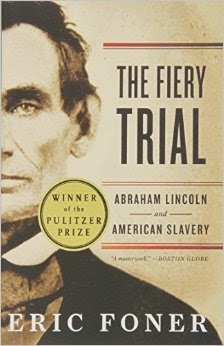by
Patricia Cornwell
Spoiler alert level: medium
Patricia Cornwell’s novel, Red Mist is a page-turner.
Usually, Cornwell’s detective, Kay Scarpetta, hits her stride when all the evidence is wrong and more important
evidence has been overlooked, ignored or misinterpreted. Conflicts with police officers, politicians,
criminal attorneys and private investigators pales in comparison.
.
However, in Red Mist, Scarpetta’s conflict with her
fellow investigators becomes a significant hurdle she must clear before she can solve the
bigger puzzle. Her lesbian niece, Lucy, and Lucy’s lover, Manhattan attorney,
Jaime Berger, pull Kay in
different directions and the results are disturbing, even fatal.
Early on, Jaime hoodwinks Scarpetta into working
for the Innocents Project to free a mentally retarded teenager from Death Row. Jaime of the New York
District Attorney’s office, switches sides when newly discovered DNA evidence
appears to exonerate mentally retarded girl, Lola, for the gruesome
murder of a wealthy Savannah family. As the story begins, Scarpetta knows the State of Georgia
scheduled the execution for Halloween but she has nothing to do with the case.
Jaime’s ploy to involve the Brilliant Scarpetta in Savannah eventually
exposes everyone to great danger. Scarpetta's involvement angers and worries some pretty powerful bad guys. Cornwell’s scenes between Jaime and
Scarpetta crackle with the conflict of a personality war: Scarpetta, who
doesn’t understand why she’s being dragged into the Death Row case, imagines the craziest possibilities; and Jaime, who’s goal is like a moving target, misleads and manipulates Scarpetta repeatedly. The conflict is above average for this genre and makes Red Mist hard to put down.
Jaime has becomes something of an DNA-chasing lawyer
since Scarpetta last encountered her. In addition, Lucy, a brilliant, self-made
millionaire and computer genius is gyrating out of orbit because of the
broken relationship with Jaime. The lovers break up when Jaime suffers symptoms
of a social death because of her sexual orientation. Despite this potboiler stuff, the story stays away from cheap melodrama for the
most part, though Scarpetta gropes for solutions with the existential angst of
a nun.
As the main conflict comes into focus, it’s clear Scarpetta
faces not one, but a horrifying collaboration of villains who want to see Lola
executed, and threaten to form a bizarre triangle to thwart Scarpetta's efforts to discover the truth. Indeed,
they appear to be much smarter than Scarpetta’s crew.
First, there's Kathleen Lawler, the mother of the brilliant and murderous Dawn
Kincaid, who offers information to Kay of a dead associate, Jack Fielding. Dawn Kincaid and her mother alone would
be a handful for an entire law enforcement agency, but Cornwell also brings in
the warden of the Georgia Prison for Women, Tara Grimm, who loathes the idea of Lola escaping the
lethal injection. In the swamps of coastal Georgia, something is indeed rotten.
Completely miffed by Jaime’s manipulations, Scarpetta misses important clues and
incidents that later have dire consequences.
In Red Mist, Cornwell treats readers to a number of
locked door mysteries, impossible crimes, Terrifying suspects out of
time and place, and scientific mysteries that followers of the genre will delight in. For fans of the series, Cornwell also kills off an important, recurring
character.
The story’s not without flaws. The retarded girl has clearly been set up for a gruesome, complicated
murder, and its unlikely the entire state of Georgia would believe any of the State's claims.
And Cornwell’s villains are highly educated people with such tremendous
potential, maybe too much to believe they are so completely evil.
Moreover, Scarpetta and her company exhibit such super human qualities, you may wonder where their tights and capes are.
Red Mist is such a page-turner, you may be tempted to jump ahead
to the ending. It’s not hard. You only need to read one word to unravel
the book’s central riddle, but you’ll regret finding it.
This may be the first Scarpetta novel to get a major
Hollywood actor, Angelina Jolie, to commit to playing Scarpetta. It’s tough to
imagine anybody playing a character that seems so autobiographical (despite
Cornwell’s declaration otherwise). Cornwell’s the best person to play Kay
Scarpetta. Too bad she doesn’t act. Other actors
who would work? Diane Lane or Elizabeth Banks. As for supporting characters: Jaime should be
played by Selma Blair. Lucy should be played by, say, Natalie Portman. Now that's an expensive cast. Any suggestions?






